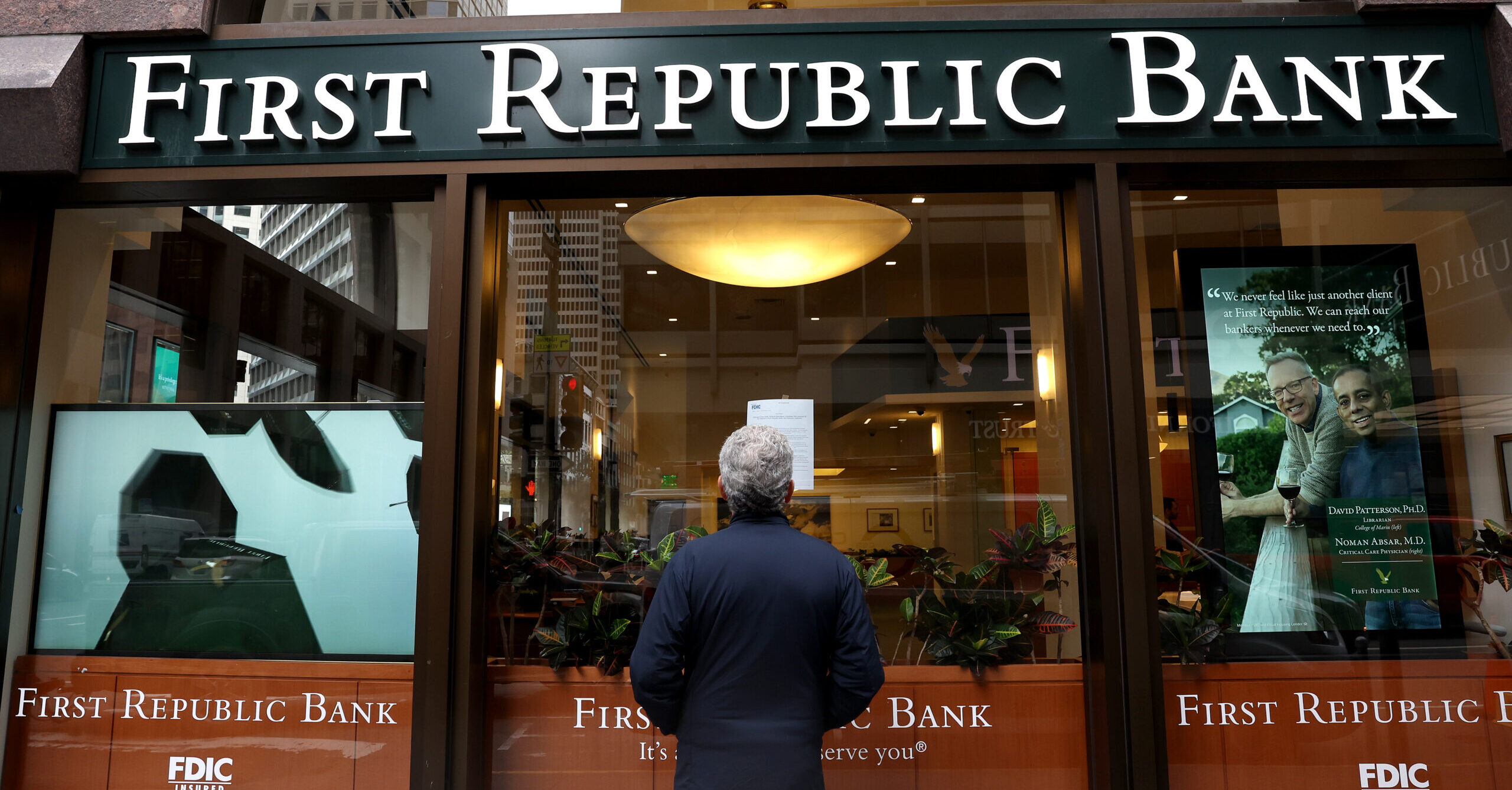It appears that 2023 could be remembered as the year that marked the beginning of a new financial crisis. When Silicon Valley Bank and Signature collapsed in March, optimists argued that this was an idiosyncrasy driven by the banks’ large holdings of startup deposits. Shortly afterwards, when Credit Suisse fell, Americans shrugged it off as a foreign bank. With the bailout-buyout of First Republic by JP Morgan over the weekend, the prospect of a general banking crisis is being taken more seriously by the markets.
Earlier this week there were sell-offs in multiple bank stocks. PacWest tanked 42%; Western Alliance plunged 27%; and Metropolitan Bank fell 20%. Comerica and Zion Bancorp followed the pack, both down nearly 10%. The KBW regional banking index, which tracks smaller regional banks, fell 7%. Markets are finally waking up to the fact that a large portion of the banking system is potentially insolvent — around half of it, by some measures.
The banking system is insolvent due to reckless central bank policy. Following the last financial crisis in 2008-09, central banks engaged in wild monetary experiments including quantitative easing (QE), which drove interest rates down to record lows. It is debatable whether these experiments had much of an impact on economic growth, but they certainly led to extreme overpricing in asset markets. QE juiced almost every financial market, from the stock market to the housing market to the market for used luxury watches. With the wave of bank failures, these markets will now likely experience heavy losses.
The bank failures themselves not only drove up the price for risky assets like those just mentioned, but also the price on riskless assets. Investors typically identify certain assets, like government bonds, as relatively lacking in risk. Governments print money, after all, so they can always pay back their loans. This means that banks feel comfortable holding large amounts of these riskless assets, and regulators are happy to let them.
But the QE policies have turned these riskless assets into risky assets. By driving interest rates on government bonds down substantially, the central banks have made these bonds sensitive to increases in interest rates. With central banks now raising rates to try to stamp out inflation, the price of these assets is falling off a cliff.
The losses have spooked depositors, who are now heading for the exit. Data shows that in the past few weeks we have seen the biggest run on deposits since the beginning of the Great Depression. So far, this has mainly impacted the smaller, regional banks. Those holding deposits at these banks that are larger than the Federal Deposit Insurance Corporation (FDIC) limit of $250,000 are scared that the bank will collapse, and that they will lose their money. When the depositors take the cash and run, the bank soon collapses.
The recent use of bailouts and assisted buyouts may become increasingly difficult as more banks come under pressure. The only solution then will be to guarantee all deposits in the banking system.
Doing this, however, would be tantamount to the Government giving a blanket guarantee to all holdings of capital. With such a free insurance policy in place, investors could take as much risk with their investment as they saw fit — after all, if the investments go bad, the Government will pick up the tab. Economists call this problem “moral hazard”.
Yet, even then, the damage to the economy has likely already been done. Credit standards are now tightening rapidly, meaning that lending to the real economy will soon seize up. Consequently, businesses will pull back on investment and people will stop buying houses. At this point, unemployment should start to creep up as layoffs start in the construction sector. A recession should follow in short order — likely accompanied by a full-blown crisis.
The long-term legacy of this situation could be a partial socialisation of the banking system, though. After the last financial crisis, central banks around the world engaged in an unprecedented monetary experiment. The impact of this experiment on the real economy was uncertain at best, and past a certain point the central banks appeared to be doing the QE policies just to demonstrate that they could. But these policies had costs, and we are now seeing those chickens come home to roost. Just don’t expect mea culpas any time soon from the people in charge.











Join the discussion
Join like minded readers that support our journalism by becoming a paid subscriber
To join the discussion in the comments, become a paid subscriber.
Join like minded readers that support our journalism, read unlimited articles and enjoy other subscriber-only benefits.
Subscribe